What exactly is ‘the wat’ry star’? What does ‘verily’ mean? And who really wrote the ‘Fly Scene’ in Titus Andronicus? Read on for the answers to the above, plus a crash-course in using the New Oxford Shakespeare database!
State Library Victoria members can access hundreds of databases from home (if your home is in Victoria). That’s millions of articles, magazines, archives, ebooks, videos, songs, audiobooks and more, available through the catalogue anytime. We’re taking a closer look at new and/or interesting databases as well as hidden gems from our collections. Read on for top picks and tips from Librarians.
Not a member yet? Sign up online first and reward your curiosity.
Today we’re looking at the New Oxford Shakespeare.
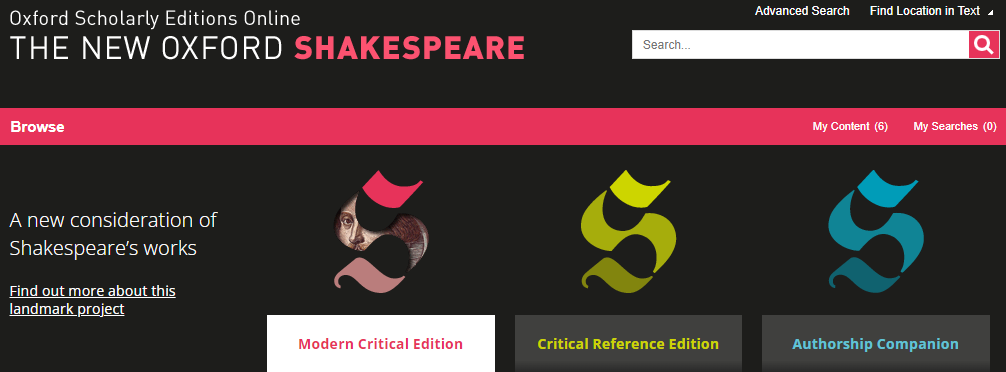
What makes this database so great?
The New Oxford Shakespeare is a complete collection of Shakespeare’s works, along with helpful annotations and scholarly essays, packaged neatly together within the Oxford Scholarly Editions Online platform. Users can explore the three included modules from the homepage:
- The Modern Critical Edition: The complete works of Shakespeare with simplified, modern spelling; perfect for reading, quick reference, or study. Great for teachers, students, and recreational readers alike.
- The Critical Reference Edition: The complete works again, this time with the original spelling, punctuation, and grammar. Includes introductory essays for each work and an introduction to the key scholarly debates. This edition is aimed at Shakespeare scholars and is suitable for literary and bibliographic research.
- The Authorship Companion: A collection of fascinating essays on the study of Shakespearean authorship and chronology. For the serious Shakespeare buff.
But the real strength of the New Oxford Shakespeare lies in its great user features to help you get the most out of your favourite Shakespeare play or sonnet. Let’s explore some of these features now!
More than just plays
Each edition of the New Oxford Shakespeare comes with its own selection of annotations and notes. Try adding additional panels to your view by clicking the icon in the top left of your screen:
‘Notes’ might include performance notes, discussions on spelling variants, lineation emendments, textual emendations, or general commentary. Remove ‘Notes’ categories that don’t interest you by clicking the cog icon in the top right of the Notes panel.
If a grey circle (Modern Edition) or diamond (Critical Edition) appears to the right of a line in the ‘Main Text’, there will be a corresponding annotation in the ‘Notes’ panel. Click on the circle/diamond to highlight the relevant note, or vice-versa.
The ‘Extras’ panel will contain links to digitised pages of some of the original folios and quartos from the Bodleian Library, British Library, Folger Library and Internet Shakespeare at the University of Victoria. More on this later!
Now that you have your panels set up, try clicking the ‘Lock Panels’ button in the top left of your screen:
Your visible panels will now scroll together, keeping your notes, extras and main text aligned on your screen.
Compare and contrast
Can’t decide between the Modern or Critical edition? Read both at once and compare the two! Select the ‘Read With…’ button at the top of your screen and add the alternate spelling variation.
Define and cite
Highlight any word or phrase to open a definition in the Oxford English Dictionary (subscription provided with your State Library Victoria membership).
Highlight any line and select ‘Copy and cite’ for a citation. Each line has its own URL so you can easily locate your quotes again.
Highlights
Digitised folios
Activate the ‘Extras’ panel to see links to digitised pages from some of the surviving First Folios – the first collected edition of Shakespeare’s plays, published in 1623:
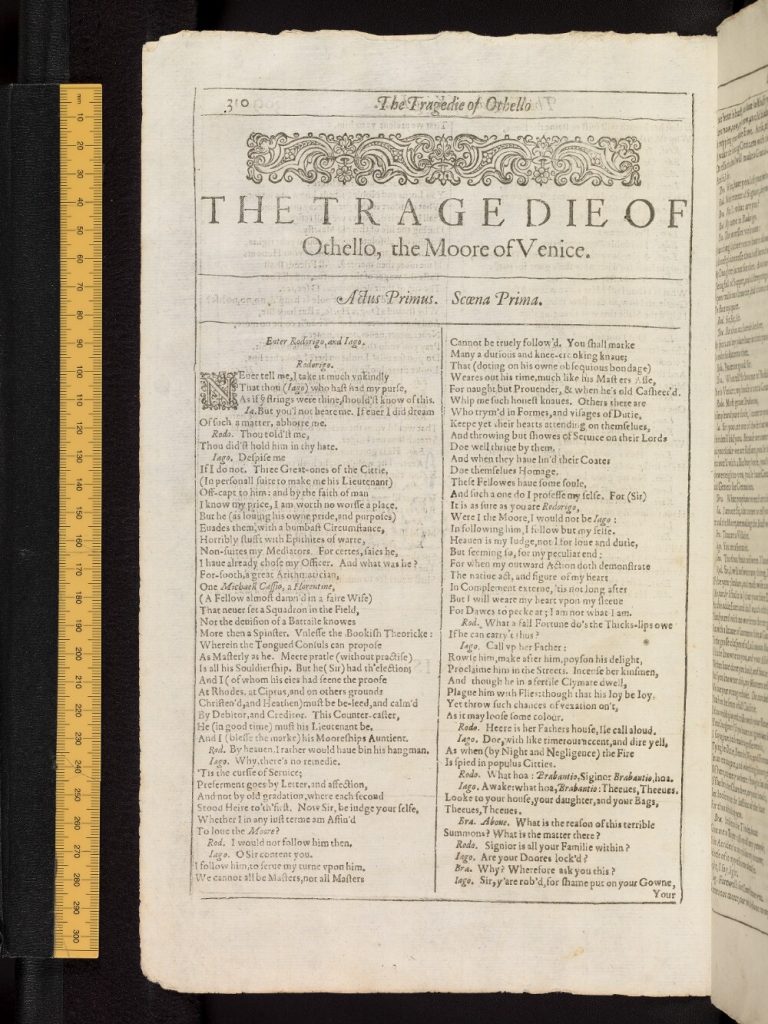
Critiques and interpretations
Check the ‘Bricolage’ before each work in the Modern Critical Edition for key quotes from prominent critiques of the texts. Here you will also find stunning images taken from well-known productions of the works, such as this still from Christopher Wheeldon’s balletic interpretation of The Winter’s Tale:
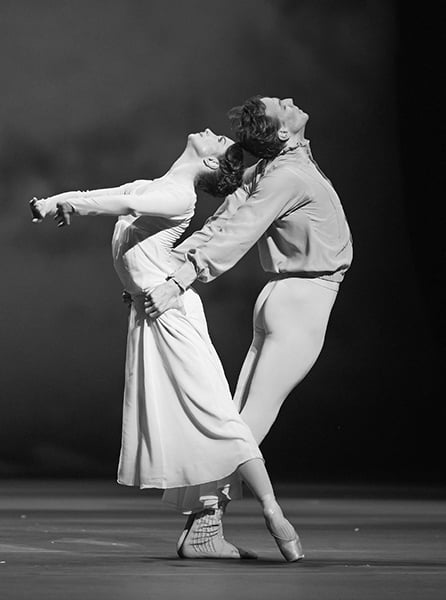
or this image of Ira Aldridge, the first black man to portray the role of Othello:
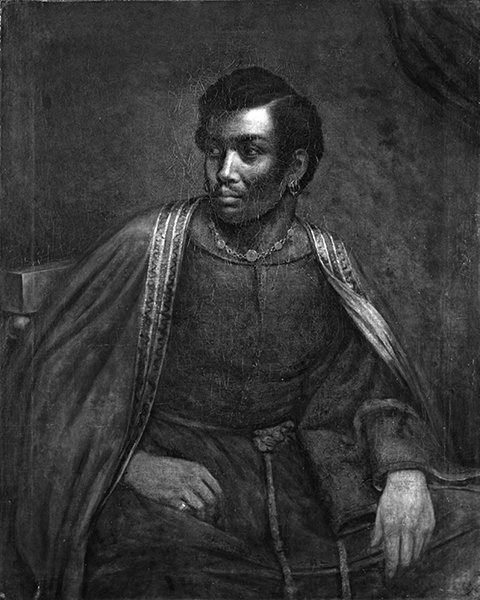
Authorship companion
This module of the database contains a fascinating ebook of essays discussing the field of study of Shakespearian authorship. Who wrote the ‘Fly Scene’ in Titus Andronicus? You might not find the definitive answer here, but you will be sure to come away with many new questions about the great William Shakespeare!

We hope you enjoy exploring New Oxford Shakespeare.
We always welcome your recommendations for database trials – let us know what you’d like to see. Have a research query or questions on how to use our online collections? Ask a Librarian.




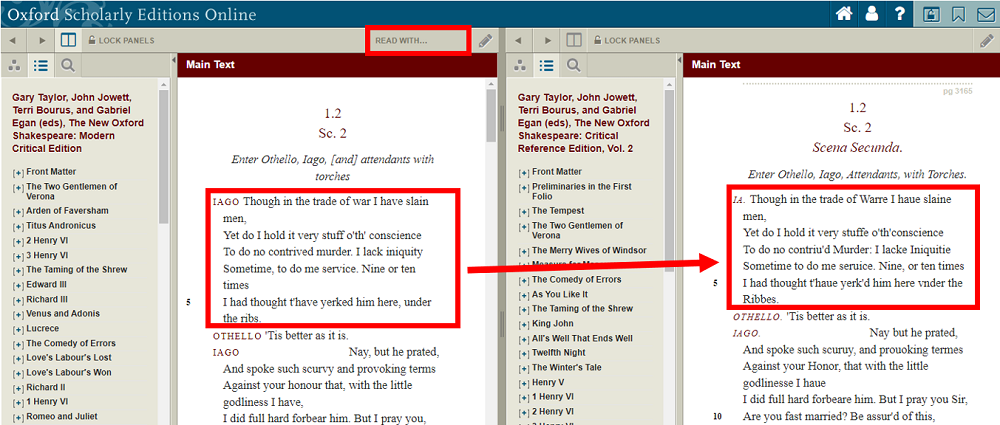
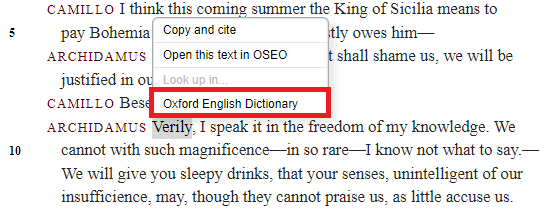



This is actually quite interesting.